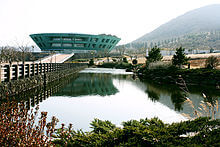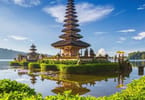What is often referred to as dark tourism is now a hopeful light in terms of tourism for South Korea. The Korean War took place between North Korea and South Korea from June 25, 1950, to July 27, 1953, starting at the border. As the war droned on and moved inland, shootings took place in locations such as Bukchon and Jeju Island where tens of thousands were killed.
A tour group arrives 70 years later in Bukchon in South Korea to look at the small graves of the infants killed on January 17, 1949 when soldier entered the village, torches homes, and pulled residents into a schoolyard. Soldiers then pulled out relatives of military members and the police, and for those men, women, and children remaining, they were put into groups of 30 to 50 and dragged away. Shootings took the lives of around 300 people who were dressed in traditional white clothes. A survivor recalls that the bodies strewn across a farm patch looked like freshly-pulled radishes.
On Jeju, around 30,000 people were slain, representing 10 percent of the island’s population, but nobody was allowed to talk about this. The government frowned on looking back at these dark memories. But now under the leadership of President Moon Jae-in, the freedom to remember is no longer considered a crime in itself.
After the war, South Korea used golf courses and resort hotels to cover the atrocities of Jeju Island. Except for the graveyard, there were no memorials or museums constructed to memorialize the war that took place there.

Jeju is now one of South Korea’s most famous tourist destinations, and the tourism authority there likes to refer to itself as the other Hawaii. There are “sea women” who can be seen diving off the island’s shores – women of age. And now, dark tourism is more important with these types of tours that visit locations such as where a massacre took place, becoming more popular.
On Jeju, visitors crawl into pitch-black rock shelters, using their smartphones for light, where rusting bullets and fragments of earthen utensils used by the fugitives are still found in these bat-infested caves. Visitors can also see mass grave sites where hundreds of people were rounded up and executed at the outbreak of the Korean War in the early 1950s.
Tales of brutality by government forces are still recounted by islanders, including the raping of women and requiring people to applaud as their relatives were killed. Soldiers are said to have forced a mother to walk around her village with the severed head of her insurgent son. This author recalls her Korean grandmother recounting when she saw a solider throw a baby into the air and then caught it on his bayonet.
A formal investigation took place in 2000, and in 2006, the South Korean government apologized for the butchering of innocent islanders in the name of fighting communism. In 2008, the government opened a large Jeju “Peace Park” honoring the victims. At a government-built museum, thousands of names, including those of children, are inscribed in walls of black marble, helping visitors feel the scale of the slaughter.

Even though the history can now be freely discussed, many island residents choose not to. The Jeju killings remain a sensitive topic in South Korea, which is divided over how to come to terms with its modern history.
Many survivors have refrained from discussing the era even with their children. These older islanders want to end the vicious circle of hate begetting hate. Some victims’ families remain fearful of a backlash and worry that if conservatives returned to power in Seoul, they would again suppress efforts to investigate.
Younger residents of the island, however, appear to be more eager to explore and expose the past. One of those young persons, Ms. Kim, is now an organizer of one of these dark tours. Her great-grandfather, a Jeju native, Kim Myong-ji, was killed at age 27 by government forces. She prefers not to hide her family’s history and would rather raise awareness.
IHE Ị GA-Ewepụ na edemede a:
- A tour group arrives 70 years later in Bukchon in South Korea to look at the small graves of the infants killed on January 17, 1949 when soldier entered the village, torches homes, and pulled residents into a schoolyard.
- A formal investigation took place in 2000, and in 2006, the South Korean government apologized for the butchering of innocent islanders in the name of fighting communism.
- At a government-built museum, thousands of names, including those of children, are inscribed in walls of black marble, helping visitors feel the scale of the slaughter.






















